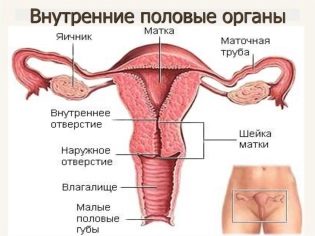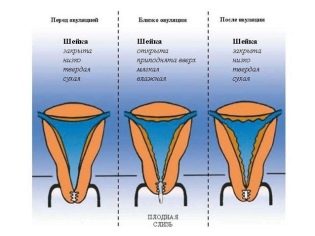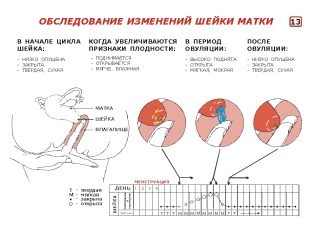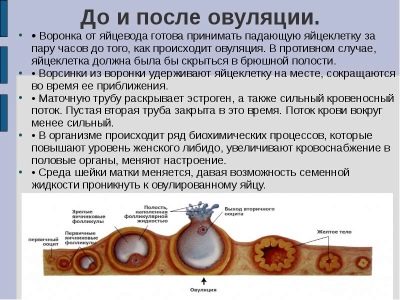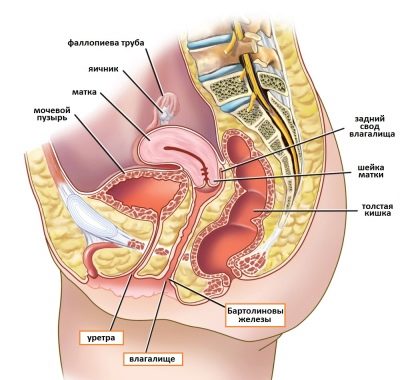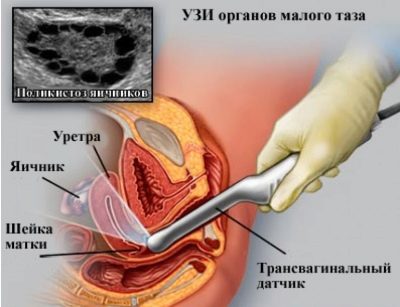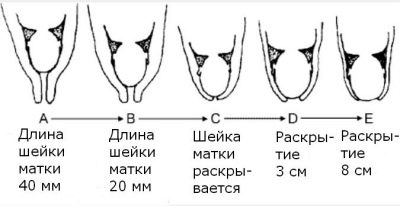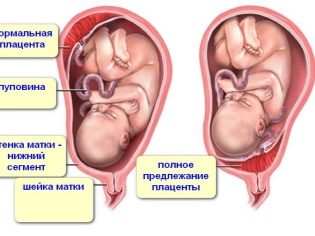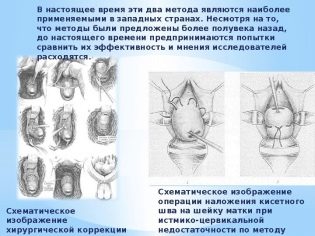What should be the cervix during early pregnancy?
Healthy prenatal development of the baby is impossible if the expectant mother has any pathology of the female genital organs. During pregnancy, doctors regularly assess the condition of the cervix. It is especially important to carry out such diagnostics in the earliest terms of carrying a baby.
Physiology
The cervix is a kind of entrance into the uterus. This organ is a continuation of the cervical canal. Normal cervical dimensions are very important. Deviations from the norm can lead to the fact that a woman and her baby will have various pathologies.
The location of the uterus and cervical canal is determined during an extended pelvic exam, which is held future mother in the chair.
The size of the cervix in most healthy women are from 3 to 4.5 cm. A change in this indicator is a very important clinical sign of the development of many pathologies.
Unstable hormonal background contributes to the fact that the size of the cervix may vary. This is especially clearly manifested by the second half of pregnancy.
If, when a woman is carrying a baby, doctors determine a shortening of the size of the cervix, this is a manifestation of the pathology that requires correction.
Condition before ovulation
The cervix is adjacent in its lower part to the vagina. In non-pregnant women, this zone is solid. Already in the first weeks of pregnancy it becomes loose and softens. The position of the vaginal part of the uterus before menstruation may vary somewhat. This condition is usually detected by a gynecologist during a gynecological examination.
In different periods of a woman's menstrual cycle, the cervix is different. In the period before ovulation, its hardness is maximum. The cervical canal at the same time as narrowed as possible. This condition is physiological.
Severe narrowing of the cervical canal is necessary at this stage of the female cycle in order to prevent conception.
In ovulation
During this period of the female cycle, the condition of the cervix changes. It becomes more loose and softer. If the gynecologist conducts a study in such a period, he will also discover the closure of the internal pharynx of the uterus. Doctors call this condition symptom or sign of the pupil.
The cervix also rises slightly during this period. If the location of the reproductive organ is not physiological, then such a situation may lead to the woman having adverse symptoms. Usually in this case, there is a pulling soreness, and white discharge from the genital tract begins to appear.
During this period of the female cycle, the secretion of cervical mucus is enhanced. It is necessary to successfully conceive. It is thanks to this secret that sperm can penetrate the uterus and to the egg.
If the merging of the sex cells of a man and a woman did not happen, then the next stage of the menstrual cycle begins.
After ovulation
During this period of the female cycle, the position of the cervix changes. This body begins to shift down. During a gynecological examination, the doctor determines that the cervix becomes dry and somewhat thick to the touch. The diameter of the cervical canal is insignificant.
This period is characterized by the fact that cervix not ready for sperm penetration. Contributes to the appearance of such changes changing hormones.Female sex hormones act on epithelial cells, which leads to the development of their specific changes.
In the early stages of pregnancy
During the gynecological examination, the doctor assesses several clinical indicators. It determines the location, tone, color, shape and density of the cervix.
In the first weeks of pregnancy, the color of the mucous membranes of this organ changes. This zone changes its color from pale pink to maroon. The density of the cervix to the delay of menstruation is also different. All clinical indicators change with the development of pregnancy.
In the gynecological examination, doctors already in the first days of pregnancy reveal plethora of blood vessels. Changes in this period and the tone of the uterus.
If it is too pronounced, then this situation is already a manifestation of the pathology - hypertonus. In this case, more careful monitoring of the expectant mother during the entire pregnancy is required.
Typical changes in the cervix begin to occur in the first half of pregnancy. Even in the earliest periods since conception body density changes. The cervix becomes softer.
The lumen of this body is also changing. First, the cervix is ajar. As pregnancy develops, the diameter of the cervical canal gradually decreases.
This physiological response is necessary so that the woman does not have a premature birth.
The location of the uterus in the pelvis is a very important clinical sign. It may be tilted too far forward or shifted to the side. In this case, the course of pregnancy may be pathological. In such a situation, a woman needs more careful observation throughout the period of carrying her baby.
In the initial weeks of pregnancy, the mucous membrane of the cervix looks smooth. This is due to the large amount of cervical mucus that epithelial cells of the cervical canal produce. This biological secret is necessary in order to protect the pelvic organs and the developing baby from infection.
During pregnancy, the mucous membranes of the cervix become friable. Typically, this situation develops to the third trimester of pregnancy. If the cervix becomes too soft or loose, it may even be necessary to hospitalize the expectant mother to the hospital.
Many women try to palpate the cervix on their own. Immediately it is worth noting that don't do it. Identify signs of pregnancy by this method alone is impossible. In this case, only the risk of a secondary infection is high.
If a woman has a delay in menstruation after unprotected intercourse, then she should immediately consult a gynecologist for advice.
How to determine the condition of the cervix in the early stages?
To identify pathologies of the cervix is not always necessary to conduct a gynecological examination. Usually, the doctor conducts such studies only according to indications. More often, doctors use transvaginal ultrasound to monitor developing disorders.
If a woman has a long cervix and no shortening, frequent gynecological examinations are not required. It should be noted that the appearance of cervical abnormalities occurs in the very early stages of pregnancy.
It is not by chance that several clinical examinations are conducted during pregnancy. Until 20 weeks, the cervix must be the same as before in the first days after conception of the baby. Significant changes in this body are not observed. This is due to a gradual change in hormonal levels.
In this case, both throat cervix remain fully closed. The dimensions of this body in this case range from 4 to 4.5 cm.If a woman has this figure drops to 2 cm, then in this case, doctors say about shortening.
Normally, the length of the uterus should be within the normal range. Only after 20 weeks a slight physiological shortening of this organ begins to occur. This condition develops almost to the 28th week of pregnancy.
Further, the size of the cervix continues to decrease. This situation is necessary for natural childbirth.
How are pathologies manifested?
Doctors distinguish several risk groups in which women with certain pathologies fall. In order to assess this risk, history is very important. If a woman prior to the previous conception of the baby had abortions, especially complicated ones, then more careful monitoring of her pregnancy is required.
The use of obstetric forceps and other ancillary medical instruments during a previous pregnancy can cause the cervix to be damaged.
Hormonal imbalance only contributes to progesterone levels are significantly reduced in women. In this situation, doctors, as a rule, prescribe special hormonal preparations for pregnant women.
Future moms who are carrying twins or triplets, also have a higher risk of developing various pathologies of the cervix. Such pathological conditions are manifested in multiple pregnancies already in its earliest periods.
Low placenta previa often leads to the development of various pathologies of the cervix. Typically, this pathology is formed by the end of the first trimester of pregnancy.
The lack of full medical monitoring of the development of this condition can contribute to the development of extremely dangerous pathologies for both the expectant mother and her baby.
Women whose doctors have identified cervical erosion before or in early pregnancy are at increased risk for the development of various pathologies. In this case, careful monitoring and selection of tactics for monitoring the expectant mother is necessary.
If, by the end of the first trimester of the woman, the doctors suspected cervical insufficiency, she is referred for additional examination. To do this, she conducted an ultrasound. In some cases, this may cause the doctor to refer a woman. for hospitalization in the hospital.
Suspected cervical insufficiency can be already in the very early stages of pregnancy. In this case, the cervix opens too early. Usually, it is significantly revealed by the 8-12 week of pregnancy. Such a pathology is fraught with the possibility of a spontaneous miscarriage.
Cervical insufficiency can also lead to infection of the fetus and internal female genital organs. If this pathology manifests itself in the early stages of pregnancy, it is usually prescribed hormone therapy. The use of more invasive procedures is carried out a little later.
If the pathological condition is expressed significantly, then suturing may be required. Such a procedure is carried out in a hospital. The stitches in this case are superimposed on the cervix. They are removed already closer to childbirth.
It is important to note that cervical insufficiency not an absolute contraindication for natural childbirth. If the stitches are applied on time, and the treatment tactics are chosen correctly, then the woman can independently give birth to the baby without the use of a caesarean section.
Even pathologies of the cervix that have arisen at the beginning of pregnancy and are detected in a timely manner can be controlled and effectively prevented.
About the norms of the length of the cervix during pregnancy, see the following video.


